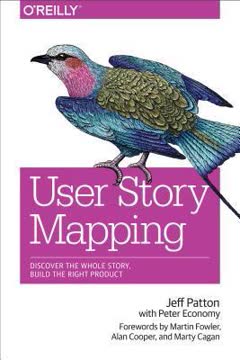Key Takeaways
1. Shared Understanding is the True Goal of Stories
Shared documents aren’t shared understanding.
Avoid misinterpretation. Traditional software development often relies on lengthy, detailed requirements documents, but these written specifications are prone to misinterpretation. Just like in the "telephone game," what's written can be "totally garbled" by the time it reaches the implementers, leading to "Frankenstein monsters" of programs or costly failures, such as the $125 million NASA Mars Climate Orbiter crash due to a unit conversion error. The core problem is that people interpret written instructions differently, even if they "sign off" on them.
Conversation is key. The true purpose of "stories" in Agile development is not to create perfect documentation, but to spark rich conversations that build shared understanding. Kent Beck, the originator of stories, intended them to "generate interest and vision in the listener’s mind" before software is even built. If teams are not actively talking, sketching, and collaborating using words and pictures, they are missing the fundamental benefit of a story-driven approach.
Documents aid memory. While conversations are paramount, documentation still plays a vital role. Think of documents as "vacation photos"—they help recall the rich details of discussions, decisions, and agreements. These artifacts, whether sticky notes, whiteboard drawings, or simple sketches, serve as tangible anchors for memory, ensuring that the shared understanding built through dialogue is retained and can be revisited.
2. Story Maps Visualize the Big Picture
Story mapping is a technique that provides the big picture that a pile of stories so often misses.
Combat flat backlogs. Agile development, while promoting visibility through small "chunks" of work, can lead to losing sight of the overall product vision, resulting in a "jumble of pieces that don’t fit into a coherent whole." Story mapping addresses this by organizing individual stories into a visual, narrative flow, allowing teams to see the entire user journey and how all the parts connect. This technique helps avoid building a system that isn't truly helpful because the "essence of what’s needed" was lost in the details.
Narrative flow. A story map arranges user activities and tasks in a left-to-right sequence, representing the user's journey through the product. Major user steps form the "backbone" of the map, while detailed tasks and alternative actions are stacked vertically beneath them. This structure makes it easy to "tell the story" of the product, revealing missing steps or overlooked scenarios.
- Backbone: High-level user activities (e.g., "Publicizing a show").
- Details: Specific tasks under each activity (e.g., "Customize the promo flyer").
- Narrative Flow: Left-to-right sequence of user steps.
Spotting holes. Mapping helps teams identify gaps in their understanding or overlooked complexities. As teams collaboratively build the map, they often discover "things that we thought another team should be taking care of, but it didn’t know," or "necessary stuff in between the big important features that we’d forgot to talk about." This proactive identification of "scope creep" (which is actually "understanding grows") saves time and resources later in development.
3. Prioritize Outcomes, Not Just Features
Your company can’t get what it wants unless your customers and users get something they want.
Focus on impact. The ultimate goal of product development is not merely to build software (output), but to achieve positive outcomes and impact. Outcomes are what happens when users do things differently and their lives are made better by the software, while impact refers to the long-term business benefits like increased revenue or market share. Prioritizing development work should always start with defining these desired outcomes and impacts, not just a list of features.
Minimize output. There is "always more to build than we have time or resources to build." The objective is to "minimize output, and maximize outcome and impact" by strategically choosing what not to build. Story maps facilitate this by allowing teams to visualize the entire scope and then "slice out" the minimum viable solution (MVS) – the smallest release that successfully achieves its desired outcomes for a specific target audience.
- MVS: Smallest solution release that achieves desired outcomes.
- Slicing: Horizontal cuts across the map to define releases.
- Target Outcomes: Specific benefits for specific users/customers.
Strategic prioritization. Effective prioritization is driven by specific business goals, which in turn focus attention on particular users, their needs, and the activities they will perform with the product. For example, Globo.com prioritized features for the Brazilian elections, focusing on news website users, rather than trying to build everything at once. This sharp focus ensures that the most valuable work is done first, leading to tangible results and avoiding the trap of building features that are "rarely or never used."
4. Plan to Learn Faster with Experiments
A minimal viable product is also the smallest thing you could create or do to prove or disprove an assumption.
Validate assumptions. Every product idea, solution, and target user behavior is initially a hypothesis. Instead of betting big on a single, large release, smart teams adopt a "validated learning" strategy, treating each release as an experiment designed to prove or disprove key assumptions. This approach, popularized by Eric Ries's "build-measure-learn" loop, emphasizes rapid iteration and learning over extensive upfront development.
Prototype to learn. Before building full-fledged software, teams should create low-fidelity prototypes (e.g., paper sketches, wireframes, simple electronic mockups) to test their solution ideas with users. This allows for cheap and fast iteration, revealing usability issues or lack of value early on. "Celebrate the bad news," because discovering flaws in a prototype is far less costly than finding them in working software months later.
- Design Comics: Visual narratives showing users solving problems with a proposed solution.
- Low-Fidelity Prototypes: Simple, quick-to-create mockups for early testing.
Build to learn. The "minimum viable product" (MVP) in this context is not a fully polished, shippable product, but "the smallest thing you could build to learn something." This might be a "less-than-minimal" version released to a small group of "development partners" (beta customers) to gather real usage data and feedback. The goal is to observe actual user behavior and determine if the solution is truly viable before investing heavily in scaling and marketing.
5. Iterative and Incremental Delivery Ensures Timely Completion
Great art is never finished, only abandoned.
Da Vinci's strategy. Just as an artist like Leonardo da Vinci would sketch the whole composition before adding details, software teams should adopt an iterative and incremental approach to delivery. This means building a "functional walking skeleton" first—a thin, end-to-end slice of core functionality—to validate technical feasibility and gain early confidence. Subsequent layers "build up" and "refine" the product, allowing for continuous evaluation and adjustment.
Manage the budget. Development estimates are inherently uncertain, but by breaking down work into smaller, measurable chunks, teams can better manage their "delivery budget." Each completed piece provides data on actual progress, allowing teams to "course-correct" if they are falling behind. This proactive risk management helps avoid unpleasant surprises and enables more reliable delivery dates.
- Functional Walking Skeleton: First slice, end-to-end core functionality.
- Midgame: Filling in and rounding out features.
- Endgame: Refining and polishing the product.
Continuous refinement. The "Mona Lisa strategy" acknowledges that software is "never really done" but can be "abandoned" at a point where it is "as good as it possibly can be" for release. This iterative refinement, where each small piece is built, inspected, and potentially improved, ensures that the final product is cohesive and polished, even if not every envisioned detail is included. This approach prioritizes delivering value on time over achieving theoretical perfection.
6. Stories Evolve Through Progressive Breakdown
Big stories break down into smaller stories, and those smaller stories can be broken down to even smaller stories.
Progressive refinement. Stories are like "rocks" that can be broken down into progressively smaller pieces, from large "opportunities" (like boulders) to tiny, "right-sized" development tasks (like pebbles). This breakdown is not a one-time event but a continuous process, occurring "just in time" as the team moves from high-level vision to detailed implementation. This prevents the backlog from becoming overwhelmed with too many tiny, uncontextualized items.
Purposeful splitting. Each stage of story breakdown serves a specific purpose. Opportunities are discussed to decide if they're worth pursuing. Discovery focuses on finding a viable solution and breaking it into release-level stories. Development planning further splits these into smaller, buildable units, often driven by learning goals or technical risks. The goal is always to maintain context and shared understanding, ensuring that even the smallest task contributes to the larger vision.
- Opportunity: Large idea, go/no-go decision.
- Discovery: Find viable solution, break into release stories.
- Delivery: Break into small, buildable tasks.
Reassembling for context. To avoid a "backlog filled with lots of tiny stories," teams can "bundle" smaller, related stories back into larger, more manageable themes or features. This allows for high-level discussions and prioritization without losing the underlying detail. The flexibility to both break down and reassemble stories ensures that the backlog remains useful for different levels of planning and communication.
7. Cross-Functional Teams Drive Effective Discovery
It’s rare if not impossible for a single person to possess the business, user interface design, and engineering skills necessary to find that valuable-usable-feasible sweet spot.
Beyond the "Product Owner." The common misconception that a single "product owner" is solely responsible for writing all stories and conducting all conversations is flawed. There are simply "too many conversations to have" and too much diverse expertise required to find the optimal solution. Effective product development requires a collaborative effort from a cross-functional team.
The Discovery Triad. The most effective organizations use small, cross-functional "discovery teams" (often called a "triad") to find the "valuable-usable-feasible sweet spot." This core team typically includes:
- Product Owner/Manager: Deep business vision and market understanding.
- User Experience (UX) Designer: User understanding, sketching, prototyping.
- Senior Engineer: Technical feasibility, architecture, innovative solutions.
This triad works together to understand problems, explore solutions, and validate assumptions, ensuring that the product is not only desired but also buildable and aligned with business goals.
The Three Amigos. For more tactical, "last best conversations" during story workshops, a "three amigos" group is highly effective. This typically involves a developer, a tester, and a product/UX person. This small group dives into the specifics of what to build, agrees on acceptance criteria, and makes decisions to split stories into "right-sized" development tasks. This collaborative approach breaks the "client-vendor anti-pattern," fostering shared ownership and better solutions.
8. Continuous Learning Fuels Product Improvement
Improvements made after release are the most valuable.
Post-delivery learning. Building software is not the end; it's the beginning of continuous learning. After delivering software, teams must actively "inspect the results of your work" to identify areas for improvement. This involves reviewing the product's user experience, functional quality, and code quality as a team, and then writing new stories for any necessary changes or refinements.
Feedback loops. Learning extends beyond the development team. Regular reviews with stakeholders, customers, and end-users are crucial. Stakeholder reviews focus on progress towards business goals and overall product vision, while user testing involves observing real users performing realistic tasks with the software. This direct feedback is invaluable for validating hypotheses and uncovering unexpected behaviors or needs.
- Team Review: Internal assessment of product, plan, and process quality.
- Stakeholder Review: Progress updates and feedback from business leaders.
- User Testing: Observing users to validate usability and value.
Metrics and observation. To truly understand if desired outcomes are met, teams must "plan to learn from each release." This involves building metrics into the product to track usage and scheduling time for direct observation of users. The most valuable insights often come from these post-release observations, revealing how people actually use the product versus how they said they would. This continuous learning cycle feeds new opportunities back into the development process, ensuring the product evolves to meet real-world needs.
Last updated:
FAQ
What is User Story Mapping: Discover the Whole Story, Build the Right Product by Jeff Patton about?
- Story mapping technique: The book introduces user story mapping as a collaborative method to visualize the product backlog and understand the user’s journey, focusing on storytelling and conversation over traditional requirements documentation.
- Shared understanding: It emphasizes building a shared understanding among teams by telling the whole story of a product, not just isolated user stories, to avoid misunderstandings and misaligned features.
- Outcome-driven development: Patton stresses maximizing outcomes and impact for users and the business, guiding teams to focus on who the users are, what problems are solved, and why the product matters.
- Continuous learning: The book highlights validated learning as a key principle, encouraging teams to plan for learning, embrace being wrong, and iterate toward viable solutions.
Why should I read User Story Mapping by Jeff Patton?
- Corrects Agile misconceptions: The book clarifies common traps in Agile, such as losing the big picture, focusing too much on writing stories, or confusing stories with requirements.
- Practical, proven techniques: Patton shares actionable methods like story mapping, story workshops, and the “three amigos” model, supported by real-world examples from companies like Globo.com and Atlassian.
- Improves team collaboration: It helps product managers, owners, UX practitioners, Agile coaches, and developers work together effectively, bridging gaps between design and development.
- Focuses on delivering value: The book shifts the mindset from output to outcome, ensuring teams build products that truly solve user problems.
What are the key takeaways and core concepts from User Story Mapping by Jeff Patton?
- Stories as conversation starters: Stories are tools for conversation and shared understanding, not just cards or requirements.
- Big picture and details: Story mapping helps teams see the overall user experience while breaking it down into smaller, manageable stories for Agile development.
- Validated learning: Inspired by Lean Startup, the book emphasizes learning what users really need by building minimal viable solutions and testing them early.
- Continuous collaboration: The process involves ongoing dialogue, breaking down big ideas into smaller parts, and refining stories collaboratively.
How does Jeff Patton define and use the concept of a "story map" in User Story Mapping?
- Visualizing user journeys: A story map is a visual representation of the user’s workflow, organized as a narrative flow from left to right, helping teams see the big picture and identify gaps.
- Organizing and prioritizing work: Story maps break down large product ideas into manageable chunks and prioritize them based on user value and business outcomes.
- Facilitating collaboration: Creating and refining story maps is a collaborative activity involving cross-functional teams, encouraging conversation and alignment.
- Evolving with learning: Story maps are living documents that evolve as teams gain new insights and learn from user feedback.
What is the main goal of using stories in User Story Mapping by Jeff Patton?
- Stories spark conversation: The primary purpose of stories is to facilitate rich conversations between stakeholders and developers, not just to document requirements.
- Building shared understanding: Stories help teams understand who the users are, what they want to accomplish, and why, rather than producing perfect documentation.
- Not requirements specifications: The book emphasizes that stories are discussions about solving problems, not formal requirements.
- Focus on outcomes: The goal is to deliver value and impact, not just to write better stories or build software faster.
How does User Story Mapping by Jeff Patton address the “big picture” problem in Agile development?
- Loss of vision: Agile’s focus on small stories can lead to losing sight of the overall product vision, resulting in disconnected features.
- Flat backlog trap: Teams often create flat prioritized lists without context, making it hard to see dependencies or progress.
- Story mapping as solution: Story mapping organizes stories into a map that shows the user’s journey, maintaining the big picture while planning and delivering iteratively.
- Prevents “Franken-products”: This approach avoids building mismatched parts that don’t form a coherent user experience.
What is the “three amigos” concept in User Story Mapping by Jeff Patton?
- Collaborative trio: The “three amigos” are a developer, a tester, and a product representative (such as a product owner or UX designer) who collaborate closely during story workshops.
- Balancing perspectives: Each brings a unique viewpoint—technical feasibility, quality and edge cases, and user/business value—to ensure stories are well understood and testable.
- Effective story workshops: This group dives deep into story details, defines acceptance criteria, and splits stories as needed, improving predictability and quality.
- Reduces misunderstandings: Their collaboration helps avoid rework and ensures alignment before development begins.
How does User Story Mapping by Jeff Patton recommend breaking down big stories or epics?
- Progressive breakdown: Large stories (epics) should be split into smaller, “right-sized” stories that can be built and tested in a few days.
- Vertical slicing: Instead of breaking into technical phases, stories should be sliced vertically (delivering user value end-to-end) to allow early feedback.
- Just-in-time splitting: Stories are broken down “just in time” through conversation, keeping them meaningful and manageable.
- Iterative process: The breakdown is continuous, with stories refined as teams learn more throughout the product lifecycle.
How does User Story Mapping by Jeff Patton approach planning releases and MVPs?
- Always more to build: The book acknowledges that there’s always more to build than resources allow, so teams must focus on delivering the most value.
- Outcome-focused slicing: Teams slice the story map horizontally to create release slices that deliver specific outcomes for users and the business.
- Multiple MVP definitions: Patton distinguishes between a bad MVP (crappiest product), a good MVP (smallest product that achieves outcomes), and MVPs as experiments to validate assumptions.
- Iterative learning: Releases are planned in phases, starting with essentials, then filling in details, and finally refining and polishing.
What is the role of discovery and validated learning in User Story Mapping by Jeff Patton?
- Discovery is about learning: Discovery focuses on understanding problems, users, and potential solutions, not just building shippable software.
- Validated learning loops: Teams use short build-measure-learn cycles to test assumptions, measure user reactions, and adapt solutions based on feedback.
- Cross-functional discovery teams: Small, empowered teams collaborate to rapidly explore ideas and build shared understanding.
- Reduces waste: This approach minimizes unnecessary work and increases the chances of building successful products.
How does User Story Mapping by Jeff Patton suggest managing product backlogs and prioritization?
- Avoid flat backlogs: Large, flat backlogs with hundreds of small stories can overwhelm teams and obscure the big picture.
- Bundle related stories: Patton recommends grouping related small stories into bigger, meaningful stories to simplify prioritization.
- Prioritize outcomes, not features: Focus on business outcomes and user goals rather than arbitrary feature lists.
- Use story maps as dashboards: Story maps provide a visual way to track progress, identify what’s done, and decide what to build next.
What are some common anti-patterns and pitfalls in story mapping and Agile product development according to Jeff Patton?
- Client-vendor anti-pattern: Treating the relationship as client and vendor leads to poor collaboration and misunderstandings; a doctor-patient style relationship is preferred.
- Design by committee: Allowing everyone equal say without clear decision-making results in bloated products; effective product owners must make tough decisions.
- Over-documentation: Writing overly detailed requirements or story narratives kills collaboration and slows teams down.
- Template zombies: Rigidly following story templates without real conversation undermines the value of stories as tools for shared understanding.
What are the best practices for telling better stories in User Story Mapping by Jeff Patton?
- Use the Connextra template: The classic format “As a [user], I want to [do something], so that I can [get some benefit]” helps focus on who, what, and why.
- Avoid template zombies: Don’t force every story into a rigid template; the real value is in the conversations stories start.
- Explore context and assumptions: Good stories discuss user types, goals, reasons, what happens outside the software, potential problems, and assumptions to validate.
- Leverage visual aids: Use story maps, sketches, and prototypes to externalize thinking and keep everyone aligned.
Review Summary
User Story Mapping receives mixed reviews, with an average rating of 4.19/5. Readers appreciate its valuable insights on Agile development and product management but criticize its wordiness and repetition. Many find the content informative, offering practical advice on user stories, product discovery, and team collaboration. The book's storytelling approach and real-world examples are praised, though some feel it could be more concise. Despite its flaws, many consider it a useful resource for product managers, developers, and Agile practitioners.
Similar Books

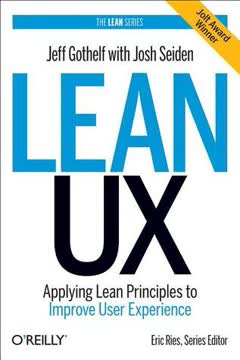

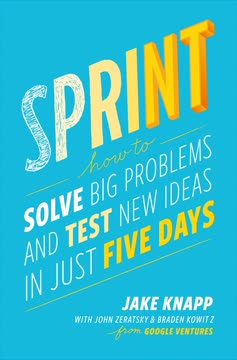
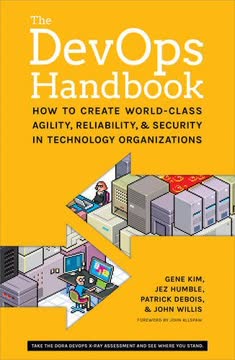
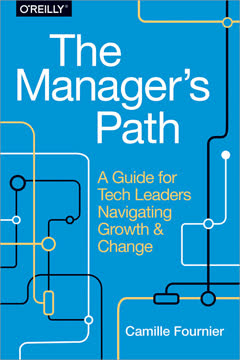
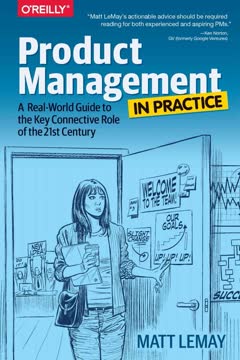
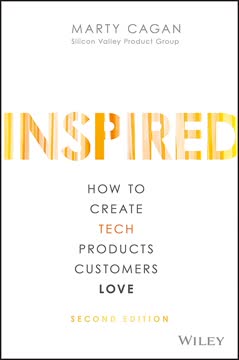
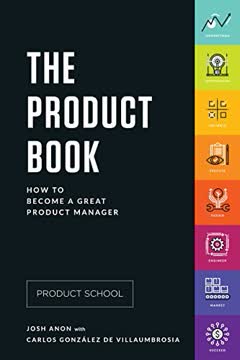
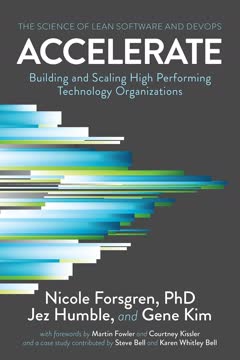
Download PDF
Download EPUB
.epub digital book format is ideal for reading ebooks on phones, tablets, and e-readers.
